Factbox: Ceasefire violations by Israeli regime in Lebanon with deadly strikes
By Alireza Akbari
After the strategic patience of five days, Hezbollah on Monday targeted an Israeli military site at Ruwaysat al-Alam in response to "repeated ceasefire breaches" by the occupation forces.
Since last Wednesday, when a ceasefire between the Israeli regime and Lebanon came into effect, ending nearly 70 days of Zionist aggression on the Arab country, Israeli forces have continued to violate the agreement that was announced by Benjamin Netanyahu himself in a televised speech.
Hezbollah's latest operation in the occupied Kfar Shuba Hills came after Israeli forces opened fire on Lebanese civilians and carried out airstrikes on southern Lebanon, resulting in several casualties.
In a statement after the retaliatory operation, Hezbollah said in addition to the continued violation of Lebanese airspace by hostile Israeli aircraft reaching the capital Beirut, the Islamic Resistance was forced to carry out an "initial warning defensive response" on Monday.
Mahmoud Qamati, Deputy Head of Hezbollah's Political Council also referenced Hezbollah’s commitment to the ceasefire despite numerous Israeli violations,
"Our blood is not cheap. We endured in silence, but the escalation continued, making a deterrent message necessary," he was quoted as saying in an interview.
He reiterated Hezbollah's commitment to the provisions of UN Resolution 1701, contingent upon Israel's compliance, and noted that the Lebanese resistance movement "is strong and resilient" and does not require military or security actions to bolster its political efforts.
Nabih Berri, the speaker of parliament in Lebanon and an ally of the Hezbollah resistance movement, also decried the Israeli regime's violations of the ceasefire agreement that took effect on November 27, calling them “blatant violations” of the terms that Lebanon committed to uphold.
Berri questioned the effectiveness of the technical committee established to monitor the ceasefire.
“Where is it regarding these violations and breaches, which now exceed 54 incidents, while Lebanon and the Resistance remain fully committed to their pledges,” he asked.
Soon after the announcement of the ceasefire last week, hundreds of Lebanese citizens headed to their homes in southern Lebanon with videos showing the Lebanese Army stationed at the entrance of the village of Khiam, where they were protecting locals and warning them not to enter the area.
Later that day, Israeli forces demolished two houses in Khiam and fired shells at Kfar Kila in the south, raising questions about the regime’s commitment to the terms of the ceasefire.
Displaced refugees return to Lebanon
— Press TV 🔻 (@PressTV) November 29, 2024
Mohammad Mohanna reports from Beirut pic.twitter.com/Nop1jdwmGs
Israeli forces continued with their provocative actions, arresting four Kfar Kila residents unrelated to any political factions. The move indicated that the regime was attempting to achieve through these actions what it had failed to accomplish on the battlefield, according to analysts.
On November 29, a local resident in Khiam recorded footage showing several cars destroyed by Israeli tanks. “Look at what Israel has done. We received approval from UNIFIL and the Lebanese Army Command,” he stated, but his words were abruptly cut off by the sound of nearby gunfire.
While still positioned in Khiam, the Israeli army attacked local civilians who had gathered to bury a relative in a western neighborhood cemetery, forcing residents to leave the deceased body in an ambulance and preventing the burial from taking place.
On the same day, two Lebanese civilians were injured in Markaba, southern Lebanon, when Israeli forces shelled a public square in the area.
Additionally, an Israeli tank fired a shell at the town of Al-Wazzani, and another Lebanese individual was injured in artillery shelling that struck Taybeh Square, following a drone strike in the vicinity.
Later, two Israeli airstrikes targeted open fields on the outskirts of Al-Bisariyyeh, although no casualties were reported in these attacks, material damage was reported.
In a statement addressing the violations of the ceasefire agreement on November 27 and 28, the Lebanese Armed Forces condemned the Israeli regime for its repeated incursions and attacks on Lebanese territory using various weapons.
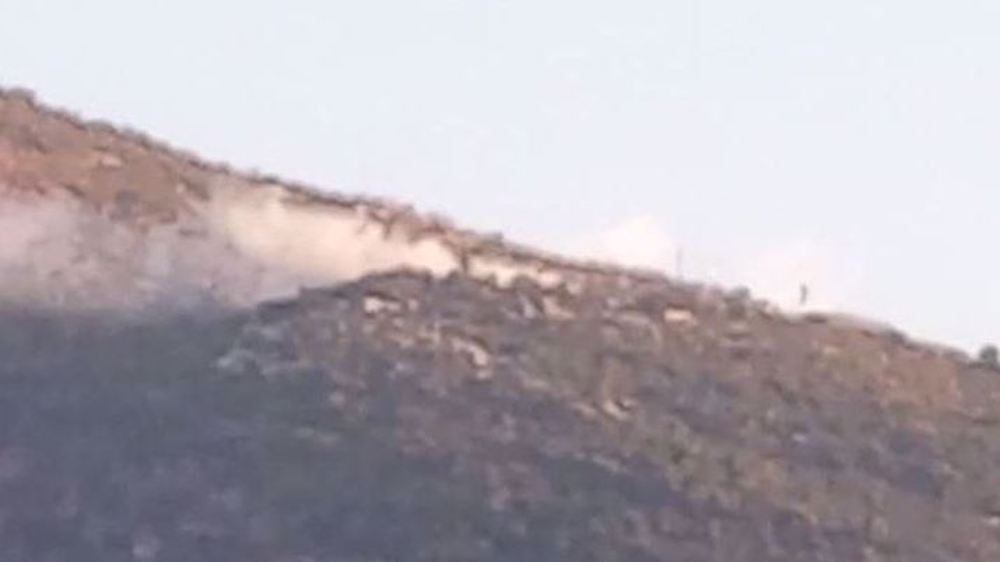
The Army Command is actively monitoring these violations in coordination with relevant authorities, the statement noted.
However, paying no need for warnings from the Lebanese side, the situation escalated further as Israeli forces opened indiscriminate fire on residents in Bint Jbeil, southern Lebanon.
In the early hours of Saturday, Israeli warplanes pounded the Qusayr border strip along the Syrian-Lebanese border, west of Homs city in western Syria.
Later that day, an Israeli drone struck a parked car in the town of Majdal Zoun, while artillery shelling targeted Al-Khiam Plain on the outskirts of Qleiaa in southern Lebanon.
Israeli military vehicles were also seen on patrol inside Deir Mimas before heading south toward Houra, located between Deir Mimas and Kfar Kila.
Eyewitnesses reported that an Israeli warplane flew at medium altitude over Iqlim al-Kharroub, while Israeli forces advanced toward the main Aitaroun road, obstructing it with dirt mounds.
Meanwhile, Israeli troops besieged a family in their home on the eastern outskirts of Aitaroun.
Continuing their violations of the ceasefire, Israeli military units opened fire with machine guns in the vicinity of Bint Jbeil and Yaroun in southern Lebanon on Saturday. Another strike targeted Tibna on the outskirts of Al-Bisariyah, marking the second such attack since the ceasefire was implemented.
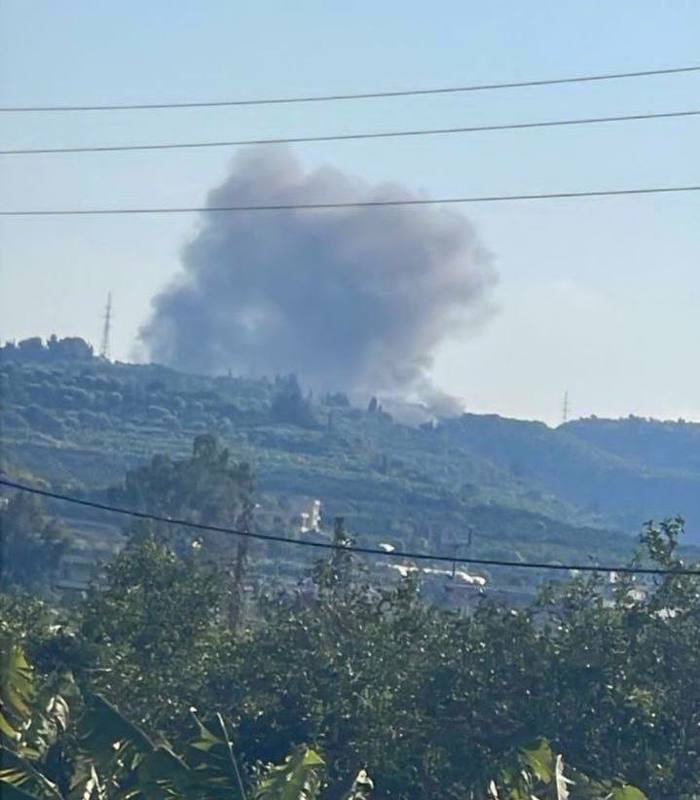
In Majdal Zoun, an Israeli strike on a vehicle left three Lebanese civilians injured, including a seven-year-old child. Additionally, strikes on Rab Al-Thalathin resulted in the death of a Lebanese citizen, Hassan Hamad, and injured another.
The Lebanese National News Agency later reported that an Israeli drone strike in Rab Al-Thalathin resulted in two fatalities and two injuries, while artillery shelling was also recorded in the Taybeh area.
On Sunday, Lebanese television station Al-Manar reported that the Israeli army was continuing to detonate buildings in the eastern parts of Khiam.
On Monday, Israeli drones targeted a motorcycle in Marjeyoun, southern Lebanon, resulting in the death of a member of the Lebanese armed forces.

Another drone strike in Ainata, near Bint Jbeil, resulted in several injuries, while Israeli bulldozers demolished homes in Kfar Kila. Israeli occupation forces, using various types of vehicles, advanced toward Meis Al-Jabal and established positions there after previously retreating from the area.
Earlier, a Lebanese Army soldier was wounded when an Israeli drone targeted a bulldozer in Hermel, in northern Lebanon.
In the southwest, Israeli soldiers opened fire on homes in Naqoura and imposed daily restrictions on residents in 50 towns across southern Lebanon, threatening them not to return.
Further explosions were reported on Monday in the Lebanese-Palestinian border area as Israeli forces continued demolishing neighborhoods in Kfar Kila and Meis Al-Jabal.
In another clear breach of the truce, Israeli infantry forces, accompanied by Merkava military tanks, stormed the Halta Heights—an area that had not previously seen ground combat.
Taking advantage of the ceasefire, Israeli forces were seen establishing a position in this region too.
A Lebanese citizen was wounded due to an Israeli airstrike in Ainata, Maroun Al-Ras, bringing the total number of Lebanese casualties since the ceasefire to six, with ten others injured and four detained.
The Israeli bombardments in the past week have included over five air raids and more than ten drone strikes, along with artillery fire involving dozens of shells and multiple detonation operations, averaging three to four daily incidents.
......

In response to continued Israeli violations of the truce agreement, Hezbollah targeted an Israeli site in the occupied Shebaa Farms, a territory recognized as Lebanese under UN Resolution 1701, which forms the basis of the current ceasefire.
Following Hezbollah's retaliatory operation, Israeli forces intensified their aggression, bombarding the town of Shebaa. Additionally, an Israeli drone strike in the southern Lebanese town of Tallousa left several citizens wounded.
With over 100 violations since the announcement of the ceasefire, the Israeli regime intensified its attacks on Lebanese territory, resulting in the deaths of three more Lebanese civilians, including a paramedic, in a drone strike on the town of Tallousa.
Following this incident, Israeli military forces launched more airstrikes on Yaroun in the south, Maroun Al-Ras, and Sarirah near Jezzine.
On Monday night, Israeli soldiers opened fire on the towns of Maroun Al-Ras, Yaroun, and Bint Jbeil. Moreover, a series of airstrikes by Israeli warplanes targeted the Al-Bureij area in the Iqlim Al-Tuffah region, the Shabil area in Al-Rayhan, and the region between Wadi Azza and Houmin Al-Fawqa, along with a raid on the areas between Al-Luwaizeh, Safi, and Mleikh.
The unwarranted aggression continued as Israeli warplanes conducted two additional strikes in the Arnoun al-Shaqif area and around the town of Mleeta in southern Lebanon.
Meanwhile, low-flying Israeli drones were observed over Dahiye, the southern suburbs of Beirut.
Another airstrike targeted the town of Hawsh al-Sayyid Ali on the outskirts of Hermel in eastern Lebanon, near the Lebanese-Syrian border, which was preceded by a sonic boom.
An Israeli strike on Haris in southern Lebanon resulted in nine additional casualties, raising the total number of Lebanese fatalities for the day to 13 and the overall toll since the ceasefire to 15.
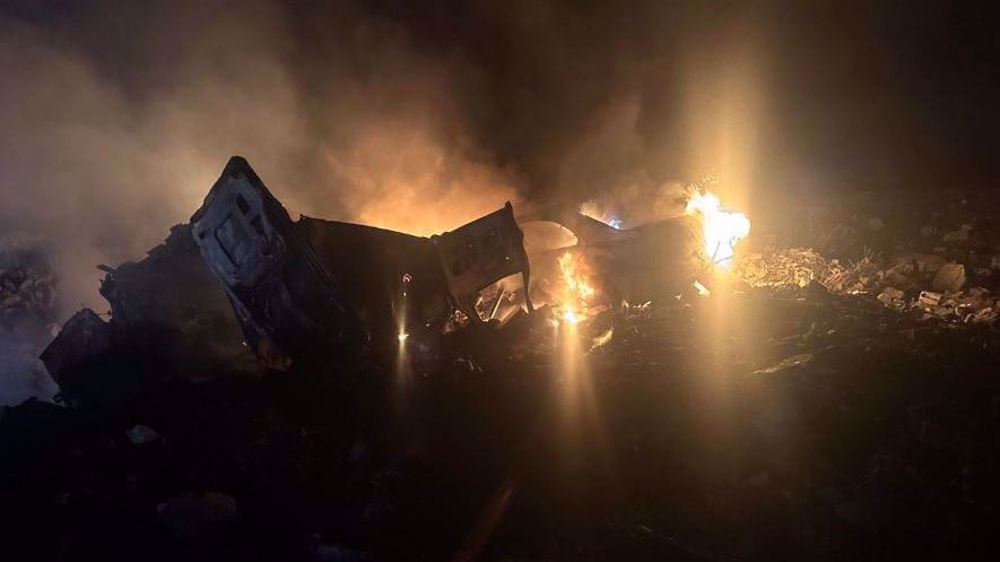
On Monday, the Israeli regime launched 30 more airstrikes on various towns and villages in southern Lebanon where many people had returned to their homes after the truce deal.
Israeli violation of the ceasefire continued on Tuesday when a shepherd was killed in the Janam area of Shebaa due to an Israeli drone strike, according to Al-Manar.
A Merkava tank was reported to have entered Al-Khiam from Ain Arab, Wadi Al-Khiam, and Al-Wazzani. Additionally, a convoy of 15 Israeli military vehicles moved from Al-Wazzani toward Wadi Al-Khiam, with some heading toward the eastern district of the city.
Drone strikes also targeted the outskirts of Deir Siryan near the Litani River and homes adjacent to Beit Lif, injuring one civilian.
Reports indicated that Israeli warplanes were flying at high altitudes over southern Lebanon, coinciding with explosions caused by the destruction of civilian homes.
Israeli forces opened fire with medium and light machine guns from Yaroun toward Bint Jbeil, while heavy gunfire was directed at the Al-Seyyar neighborhood in Habboush and Majdal Zoun square.
Meanwhile, Israeli bulldozers razed many homes in Maroun Al-Ras, demolishing the town.
Eyewitnesses noted the movement of Merkava tanks from Blida and Muhaibib toward Al-Hamra Road, on the outskirts of Ayta Al-Shaab.
Another Merkava tank advanced near Burj Al-Muluk, coming within 100 meters of a Lebanese army checkpoint.
Later in the day, several explosions were reported in the villages of Muhaibib and Yaroun, with Israeli forces demolishing residential homes following their invasion from Blida earlier that morning. Gunfire from Israeli forces has repeatedly targeted the town of Majdal Zoun.

Lebanese students protest to show solidarity with Palestinians in Gaza
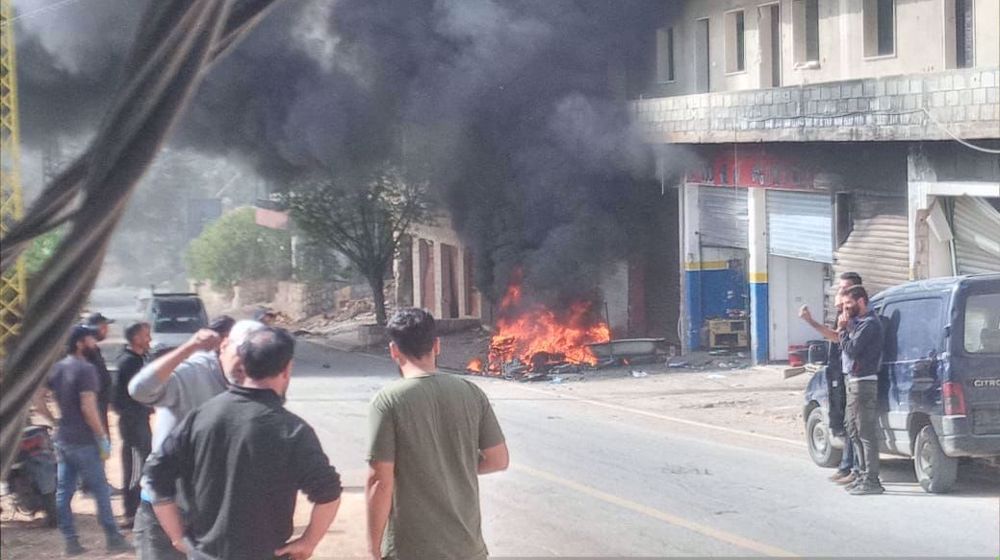
Lebanese man killed as Israel strikes south in violation of ceasefire
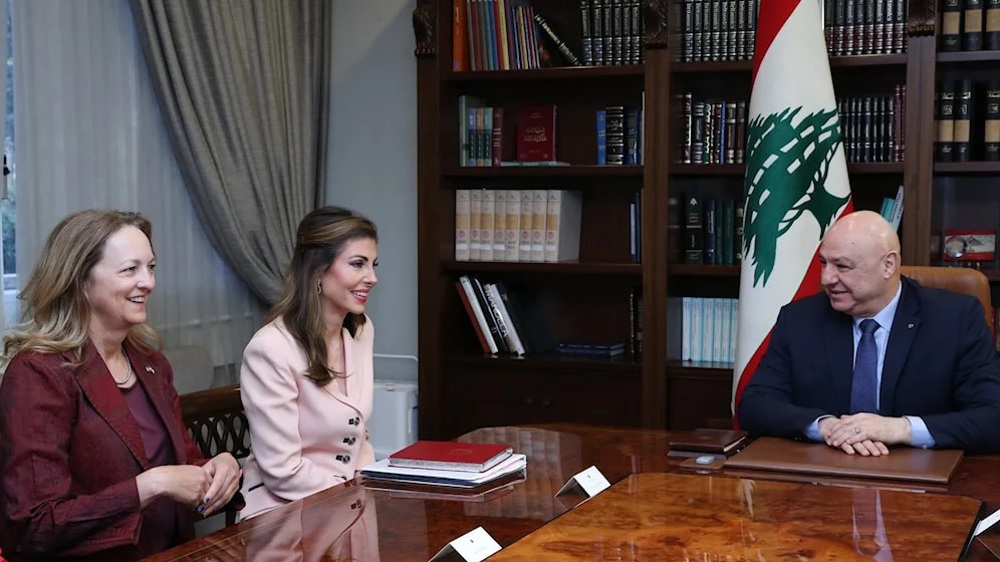
Lebanon calls on US to stop Israeli strikes, ceasefire violations
Yemen shoots down another US drone with domestic missile
Iran’s foreign minister: Oman talks a 'test to gauge US seriousness'
Trump’s announcement of nuclear talks with Iran chagrins Netanyahu
VIDEO | Gaza before and after October 7-P2
VIDEO | Gaza: How much worse can it get?
Former Israeli PM Olmert: Netanyahu inciting settler violence
VIDEO | Trump’s health cuts spark nationwide protests
Euronext says US resembling emerging market as trade war escalates






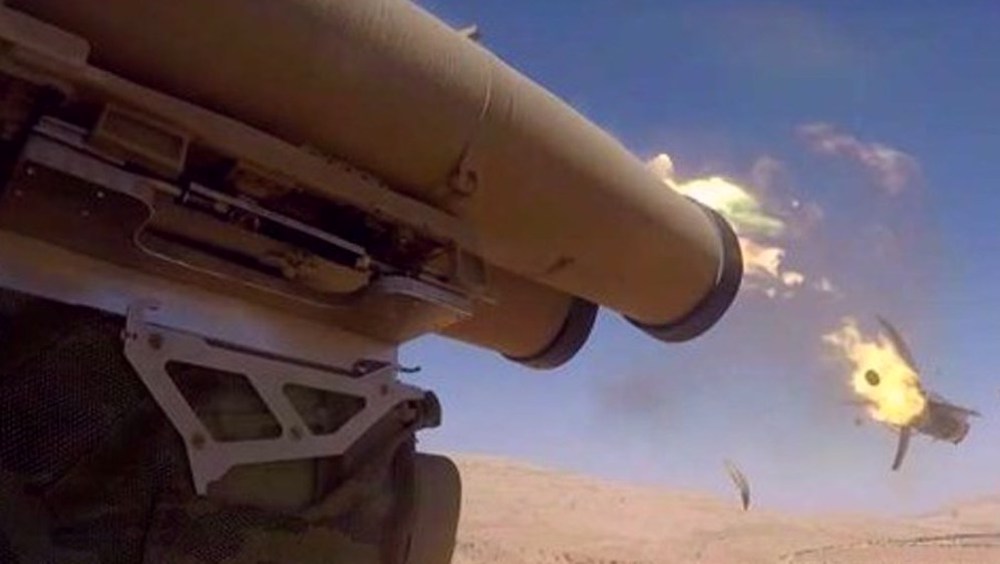
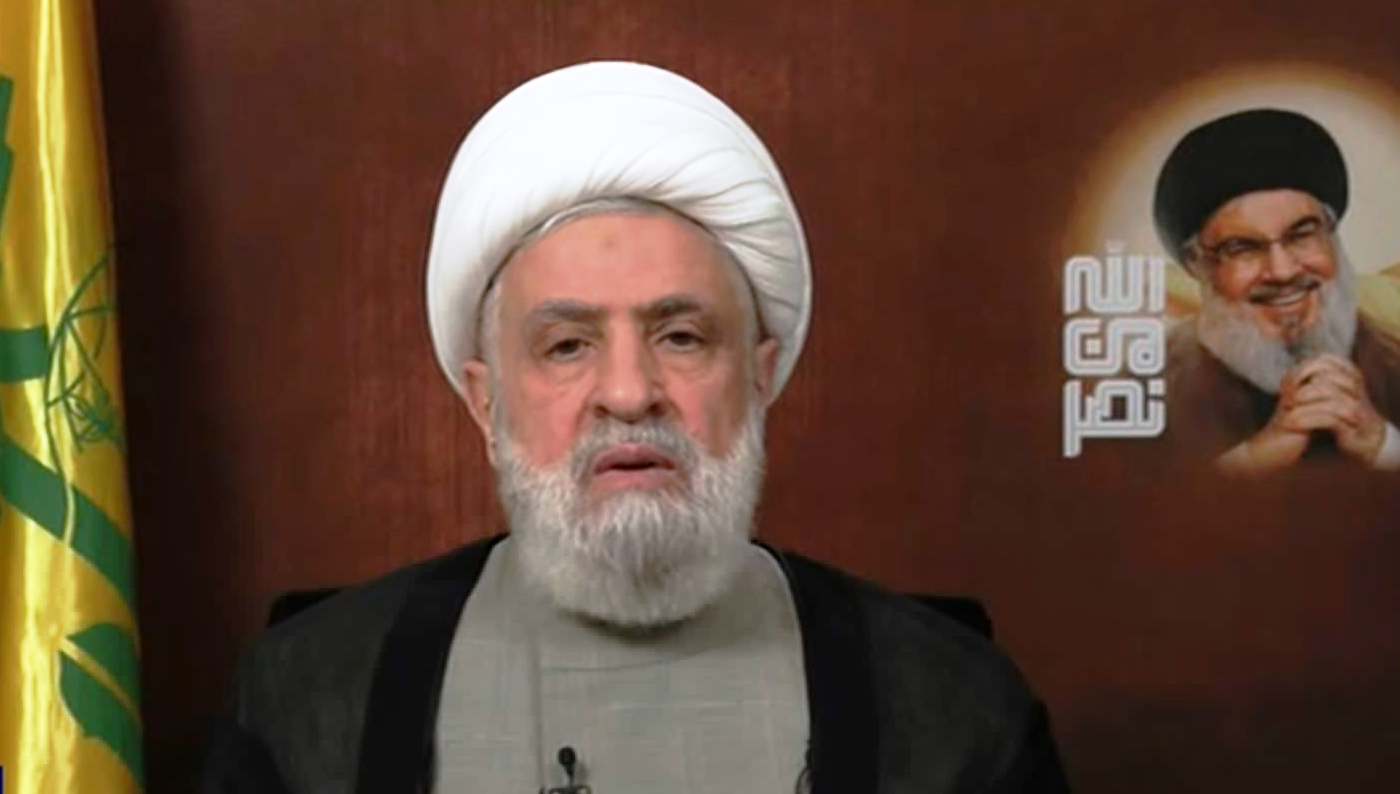
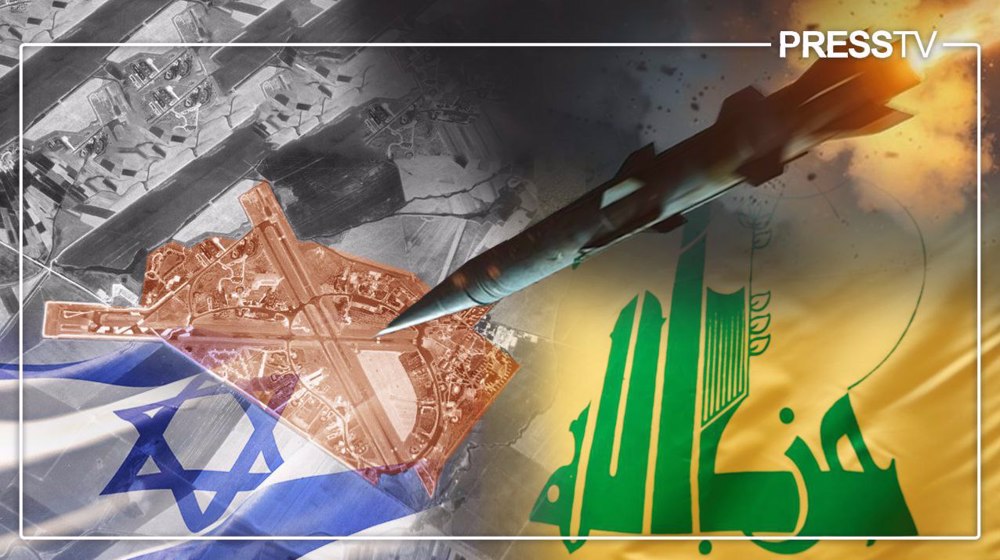
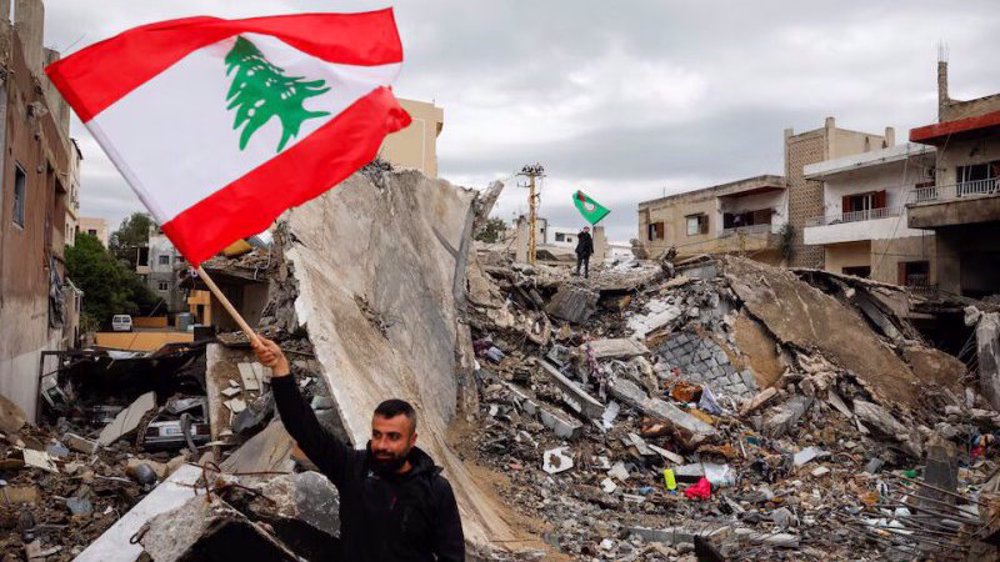
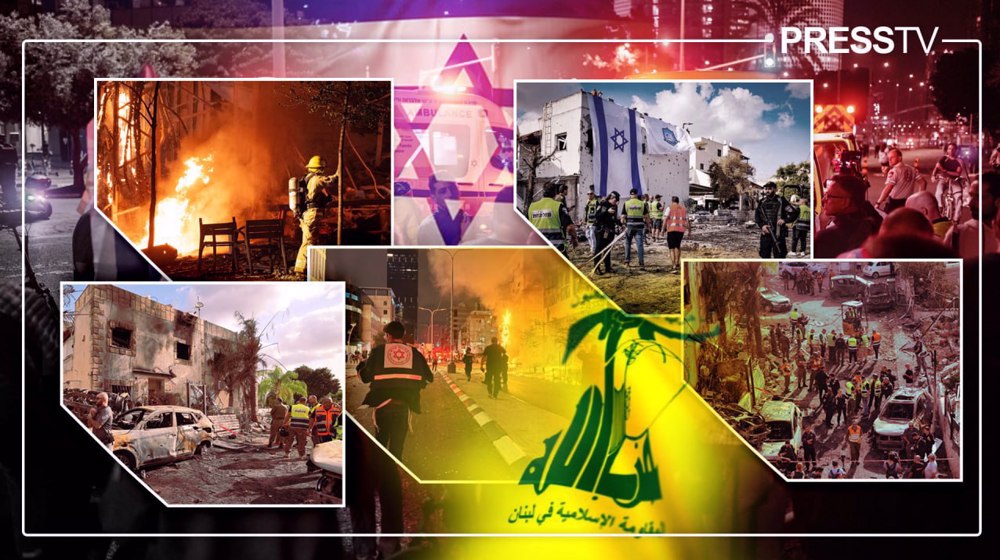

 This makes it easy to access the Press TV website
This makes it easy to access the Press TV website